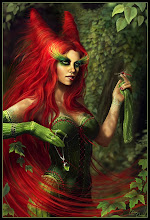 Batman:The Doom That Came to Gotham #2
Batman:The Doom That Came to Gotham #22000
One of the more interesting trends coming from DC Comics these days is the Elseworlds series--the placement of superheroes into other situations and worlds. Some of these are more successful, and some less, obviously. When Mike Mignola, the author of Hellboy, was announced as the author of Batman: The Doom that Came to Gotham, I was admittedly intrigued.
As with many Lovecraft-mainstream crossovers, Doom that Came to Gotham sounds better in concept than it manages to be in final execution. While I am intrigued with the possibilities offered by the rumor that a script called Indiana Jones and the Call of Cthulhu is under consideration, I don’t think it could possibly come to a satisfying fruition.
The conceit behind DC’s Elseworlds books is that a character from the DC Universe is brought into another genre or setting. Justice Riders, for example, brought the Justice League into the Wild West. Doom that Came to Gotham brings Batman and many of his trappings, such as the city of Gotham. Unfortunately, this means that the reader who is not well-steeped in Batlore will not understand some of the references. Who, for example, is Dr. Cobblepot, and why is he running around Antarctica with a bunch of flightless birds? He doesn’t add much to the story, but longtime readers of Batman will recognize him as the Bat’s perennial foe, The Penguin. In some cases, substitutions and transmogrifications have taken place. Lovecraft’s preferred mad Arab has been renamed Ra’s al Ghul, and his evil book, the Testament of Ghul, introduced as the alternate version of the Necronomicon.
The story has a lot of promise, but somehow, the combination of comics storytelling, Lovecraftian elements, and run-of-the-mill occultism somehow fails to satisfy on any level but that of the comic reader and Batfan. In some ways, it all feels rather rushed, as if Mignola and Richard Pace tried to cram too much into the story. There is little feeling of weight to the story because we are not given the opportunity to really feel what the stakes are. We are told that the soul of the city of Gotham is at stake, but we haven’t gotten a chance to see what the soul of the city really is. Those familiar with Batman and his Gotham City will understand, but someone who doesn’t follow Batman on a regular basis has little emotional investment. Why is the soul of Gotham worth saving, and why is it that Bruce Wayne, who has been away exploring the world for twenty years, feels so obligated to do so?
The Lovecraftian elements are diverse and widespread throughout the story. A little Charles Dexter Ward here, an extended sequence from Nameless City there, and a some little Festival thrown in as the antecedent action, in addition to a bit of name-dropping which seems to be required in any Mythos pastiche. "Yib-Nogeroth is the child of Iog-Sotha and even though he sleeps he carries out his father’s will." Sure.
The story isn’t bad. Centuries ago, the founders of Gotham made a deal with the Yib-Nogeroth, ensuring the prosperity of the city, and immortality for themselves. Eventually, Yib-Nogeroth would come back. The day, of course, is now. The plot unfolds tolerably well, with mysterious happenings, ominous forebodings, inauspicious manuscripts, and oft-repeated phrases of ill-omen. The atmosphere broods, thanks to the art of Troy Nixey and Dennis Janke. Gotham is large and boroque, and the little details of the art are fine indeed. We even get a very good look at one of those titanic blasphemies that Lovecraft would only hint at.

No comments:
Post a Comment